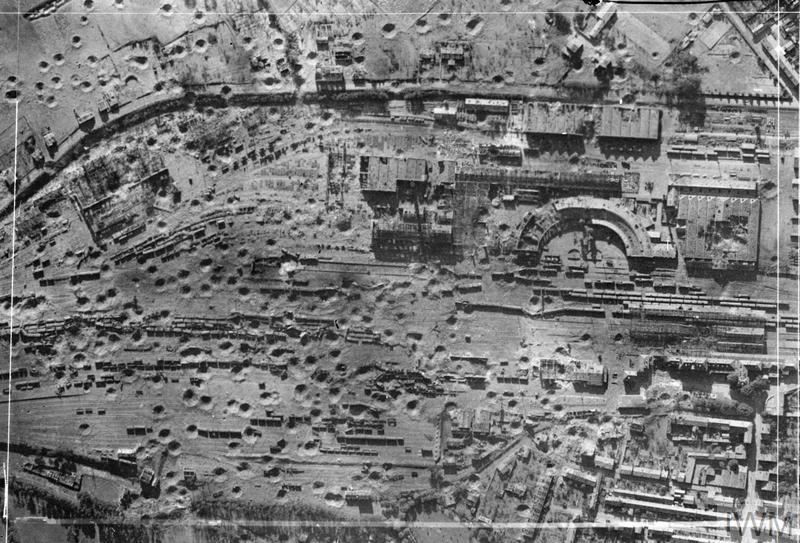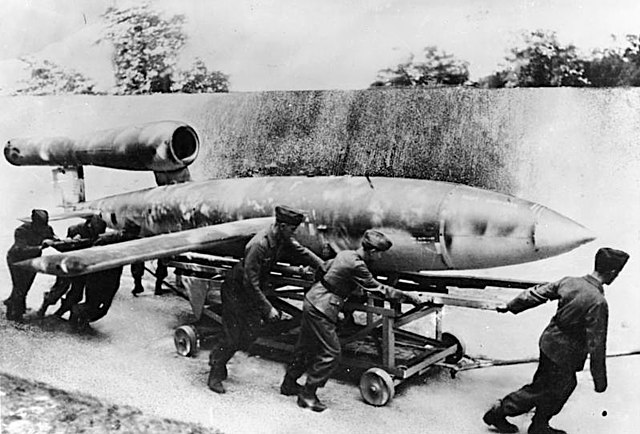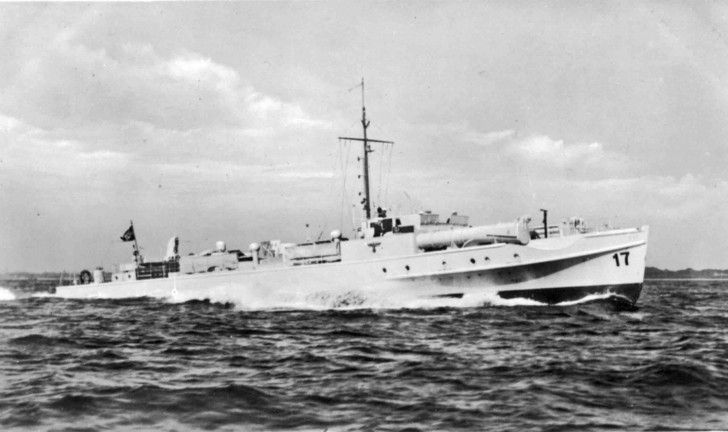Operations
Operations
After D-Day
D-Day marked the beginning of the liberation of Western Europe, but if Germany was to be defeated the campaign had to succeed beyond the initial landing on Normandy beaches. Bomber Command, who had attacked both transport networks and coastal defences ahead of the invasion, still had a critical role to play to limit Germany’s ability to counterattack against the Allies if Operation Overlord were to succeed.

Vertical photographic-reconnaissance aerial taken over the railway yards at Saintes, France,
following an attack by aircraft of Bomber Command on the night of 23/24 June 1944.
(Credit: Imperial War Museum)
Having come under the control of the Supreme Headquarters Allied Expeditionary Force (SHEAF) for Operation Overlord, both Bomber Command, and the USAAF, were tasked with several key objectives following the Normandy landings. One primary goal was to support the Allied ground forces by disrupting German supply lines, communication networks, and troop concentrations behind enemy lines.
By targeting transportation hubs, such as rail yards and bridges, as well as industrial centres and military installations, Bomber Command aimed to hamper German reinforcements and supplies to the front lines, thus aiding the Allied advance through France.
The convoys carrying troops, equipment and supplies across the English Channel had to be protected from marine attack. While Coastal Command patrolled for any U-boat threat, Bomber Command were tasked with damaging Germany’s surface capability, particularly the E-boats, the fast attack craft of the Kriegsmarine. In both tasks they were aided by a radical new bomb, the Tallboy.
German Motor-Torpedo Boats (E-Boats) or Shnellboots
At the same time Germany began its V-rocket attack on Britain shortly after D-Day. In response both Bomber and Fighter Command would be called upon to target firstly the V-1 and then V-2 bases in France and Belgium.

V1 Rocket
Meanwhile, a new combine RAF / USAAF campaign opened against Germany’s synthetic oil production facilities, which were critical to supporting their armed forces, on land, at sea and in the air.
And in France, as previously in Italy’s Monte Cassino, ground forces called for aerial bombardment on troop positions. This brought a new political risk, of civilian casualties in an allied nation.
Operations were not without challenges. The intense German air defences remained, including anti-aircraft guns and fighter aircraft, posing a constant threat to Allied bombers and losses among bomber crews remained high throughout 1944.
Despite all of this, Sir Arthur Harris wanted to maintain the strategic bombing campaign against German cities and industrial centres, looking to continue to inflict damage on German infrastructure and industry, diverting resources away from the front lines and weakening German morale and the war effort overall.
